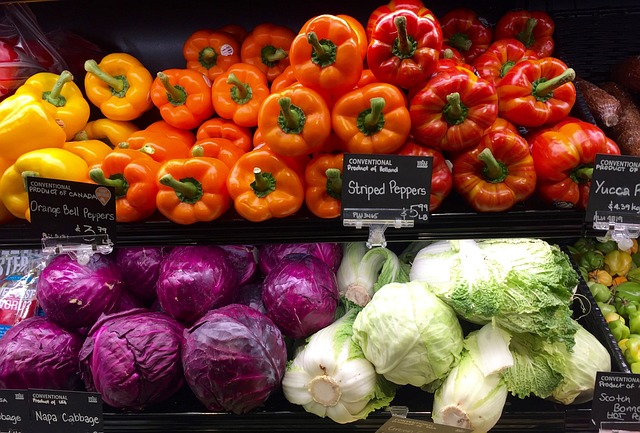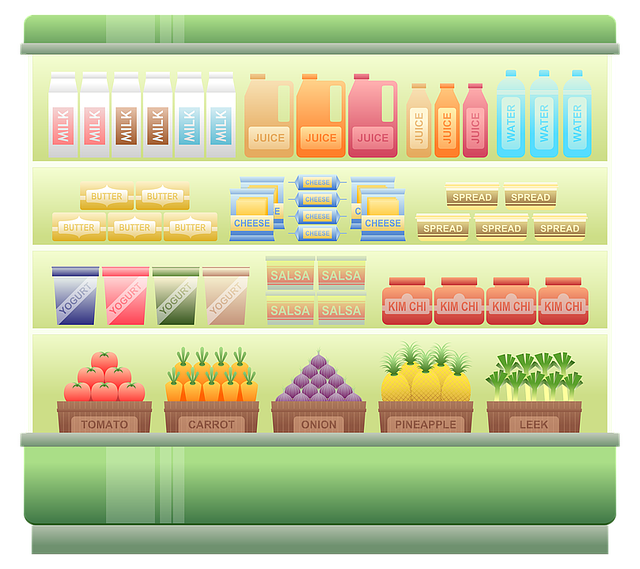Many fruits, fish, meats, bread, and vegetables are being put to waste if not stored and organized properly in our pantries, shelves, and kitchen racks. Each year, it has been recorded that 4.3 million of food are wasted. We should be alarmed with this kind of news, as there are so many people all throughout the globe are starving in which there’s no food for them to eat.
Food waste do not only contribute to the landfills and wasted money of the consumers, but a lot of carbon emissions and resources are being wasted. We must value the food that you have on your table because you don’t what it feels having no food to eat and to sleep with an empty stomach. You will never value food unless you experienced what other people have been experiencing in their everyday life.
What can we do to solve this problem? Is there anything that you can do? Yes, there is! As a responsible consumer, you can help in reducing food waste by storing them properly, reheating excess food, study food shelf life, different fermentation method, other processing methods of foods, and by buying only what is necessary in your everyday lives. Through that, you can prevent food waste and save money.

There are various ways on how to reduce food waste. Fruits and vegetables are commonly being put to waste because they are easily decayed after a couple of days, however, you can prevent that by some process and store tips.
By considering these tips and information on how to prolong shelf life, you can help in lessening the wasted food and become more aware on how to reduce food waste. So, how can we prolong the shelf life of food? The following are the ways in prolonging all the food thatyou have inside your kitchen.
Why Extending Shelf Life Helps

Extending shelf life really helps a lot of consumers, food industry, businesses, and manufacturers because by extending shelf life extending packaging means it can reduce waste and maintain nutritional value of a product. There are numerous ways to in extending shelf life and does not necessarily require other preservatives to ensure food safety. Whether you work with meat, produce, market, or prepared foods, shelf life is one of the vital obstacle to consider when trying to determine the method of packaging.
Lifespan of Fresh produce fruits and veggies

Here are the lifespan of fruits and vegetables in which you will able to know how many days it is consumable. Just remember, to always check if it still good to eat and in a good condition without any rotten part or limp.
Apples – 4 to 8 weeks inside the fridge.
Avocado – 5 to 7 days in a room temp.
Bananas – 2 to 5 days in a room temp.
Carrots – 3 to 4 weeks inside the fridge
Broccoli – 7 to 14 days inside the fridge
Cucumbers – 1 week inside the fridge
Garlic – 3 to 6 months at a room temp.
Lemons and oranges – 3 to 4 weeks inside the fridge
Onions – 2 to 3 months at a room temp.
Potatoes – 3 to 5 weeks in the pantry.
Tomatoes – 1 week at a room temp.
You can search for lifespan of other foods and those are just some. By knowing the longevity of such fruits and veggies, you will able to know how to prepare and keep them in your fridge and pantries.
Methods to Extend the Shelf Life of Food and How you can lessen food waste
These methods will help you to prolong shelf life because the longer the food shelf life, means less food loss, less food waste, and more food for everyone. Few simple methods and strategies can help you enjoy fresh fruits and vegetables longer that also means minimize household waste.
Start fresh
Starting with fresh produce products, meats, fruits, veggies, and greens are a key factor to prolong the life of those foods. Buying them fresh and straight from the farm or market where it came from will result for the longest storage life in your kitchen. Whenever you are choosing leafy greens such as cabbage should be richly colored and without any limp or yellowing leaves.
Don’t just pick without clearly checking those fruits and vegetables or just don’t rely on grocery delivery but rather if you have the time to go to the market, go actually on the market to immerse yourself with the various options that you can find in there.
Store food on a clean and well-ventilated place
Keeping your in a clean, sanitized, and well-ventilated place can keep its life much longer. The longevity of any type of food is depends on how well you managed and store those food. Can goods are expectedly has a longer life rather than fruits and veggies, however, it does not mean that you should not store it properly.
Can goods should properly organized depending on expiry date or you can create a list on when that certain product will be going to expire. Just always remember that store it properly in a cool dry place to have better food quality.
Organize it accordingly
Non one knows the organization of your kitchen tools, food , and equipments except you. By organizing your shelf , pantries, and kitchen racks will make your daily kitchen routine much easier. The number one organizing tips is to use by dates in which you can put those products or can goods who has a short life span in the front to be able to use and eat it first.
Or you can organize it according to the food labels in which through that you can easily identify what product will you get and for you not to be confused because sometimes you find it hard to identify sugar and salt if it does not any labels.
There are various ways on how to organize your pantries or your kitchen that can help you to manage it properly.
Create a meal plan
Creating a meal plan is the best way to create healthy meals and reducing food loss. Most of the mother’s are having problems on what dish they will eat in a daily basis and by creating a meal plan for the entire week, it can lessen their stress thinking of what they will eat in a day.
It is really advantageous when you have a plan of what to eat for the day or for the week, you can think of nutritious food for your kids, cooking meals in advance, or you can consume excess food or left overs if you cook in a bulk. This also has a benefits to reduce waste as everything is planned because plan meals can be refrigerated and heated up or can be eaten cold on the next day like pasta, soup stock, curry, or beef stew.
By giving yourself time to prepare all the meals can lessen your work all throughout the day and just enjoy eating with your family.
Freeze fish and meat products
As we all know, it is the easiest and probably the most used method to prolong the life of meat products to maintain it fresh and prevent from spoilage. Freezing products stops micro-organism forming and by setting the temperature to -18 degrees celcius can almost clean the germs and bacteria that can build up to the red meats.
Which is why it is necessary for you own refrigerator or chest freezer to maintain the quality of frozen products. Any organisms cannot form into a frozen product that is why it is very important to always put meats, fish, or even leftovers into a cold temperature for the bacteria and moulds could not grow.
Re-heating food and other product
Aside from freezing products, you can also reheat food in order for micro-organism to be destroyed by the heat. Common example of this product are the so-called “Hot-fillings” such as jams, syrup, and sauces because most of the time different forms of micro-organism forms on those and it is a great way to stop them from growing and it is also the ways to maintain the sterility of the product.
Re-heating leftovers or your dish last night is a great way in reducing food waste and prevent it from spoilage. There are various benefits of reheating products as it maintain the taste and kill any organism. So, before you throw away your leftovers, try to check if it is still good and can be reheated.
Grow food in your backyard
If you have a backyard in your place or a an ample amount of space for you to grow your own crops, start planting edible food or veggies that can grow in your backyard. For example, you can grow pechay, tomatoes, eggplants, herbs, chilli peppers and others. By growing vegetables in your own home, you can help in saving resources and eat directly your fresh produce veggies without chemicals or other non-organic fertilizer.
Growing fresh produce vegetable can really help in maintaining the supply chain. Vegetable scraps, food scraps, and vegetable peels can also be used as organic soil fertilizer, you just need to boost your mind and think green. We can all contribute to the World Resources Institute by recycling in our own ways, reducing waste, reusing things inside our home, and repurposing everything.
And if you don’t have any spare land in your home, you can grow indoors by using DIY container by repurposing plastic tubs, plastic bottle of sodas, or even store bins but any pot with any drainage hole will do. Through this, you can lessen the effect of climate change that save our Mother Earth.
Remember that whatever process or shelf life hacks and tips you will do, always secure the foods and products you will eat for the day. Health is definitely our wealth, so it is very important to eat healthy foods as people assume that it is not necessary. Always check the expiration date, clearly assess the condition of the product, and lastly, cook it very well to ensure that it is free from any micro-organisms.
Start creating your healthy shelf life!





